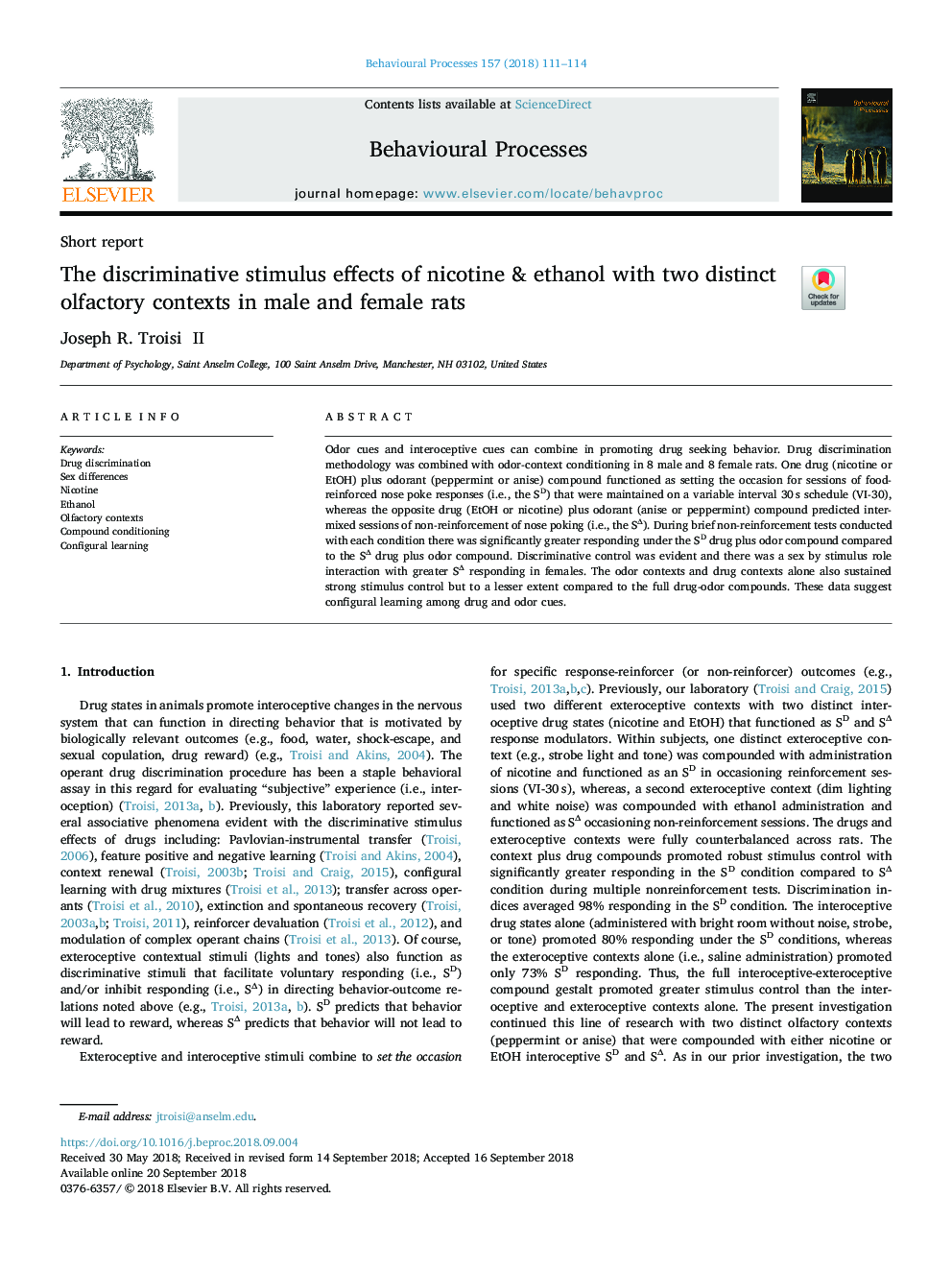| Article ID | Journal | Published Year | Pages | File Type |
|---|---|---|---|---|
| 11030797 | Behavioural Processes | 2018 | 4 Pages |
Abstract
Odor cues and interoceptive cues can combine in promoting drug seeking behavior. Drug discrimination methodology was combined with odor-context conditioning in 8 male and 8 female rats. One drug (nicotine or EtOH) plus odorant (peppermint or anise) compound functioned as setting the occasion for sessions of food-reinforced nose poke responses (i.e., the SD) that were maintained on a variable interval 30âs schedule (VI-30), whereas the opposite drug (EtOH or nicotine) plus odorant (anise or peppermint) compound predicted intermixed sessions of non-reinforcement of nose poking (i.e., the SÎ). During brief non-reinforcement tests conducted with each condition there was significantly greater responding under the SD drug plus odor compound compared to the SÎ drug plus odor compound. Discriminative control was evident and there was a sex by stimulus role interaction with greater SÎ responding in females. The odor contexts and drug contexts alone also sustained strong stimulus control but to a lesser extent compared to the full drug-odor compounds. These data suggest configural learning among drug and odor cues.
Related Topics
Life Sciences
Agricultural and Biological Sciences
Animal Science and Zoology
Authors
Joseph R. II,
